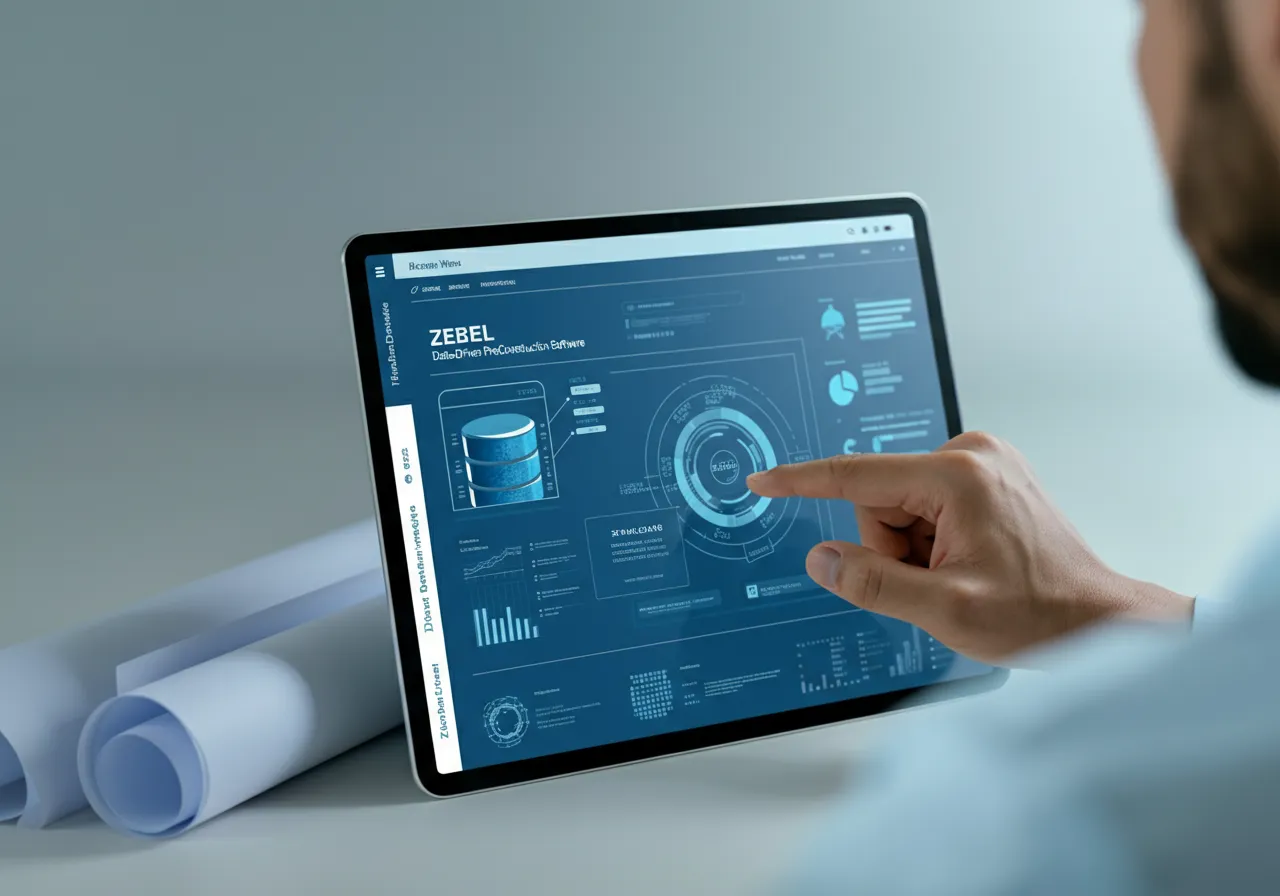Effectively managing construction costs is critical to a project’s success. Understanding the differences between direct and indirect costs is essential for effective financial management. accurate budgeting, proper cost allocation, and maximizing profitability. By distinguishing one from the other, construction professionals can make informed decisions and streamline their financial management processes.
This blog will explore the key differences between direct and indirect costs in construction, their impact on project economics, and strategies to manage these effectively.
What Are Direct Costs in Construction?
Direct costs in construction are expenses that are directly tied to a specific project. These costs are easily traceable and vary depending on the scope of the construction project. Put simply, direct costs have a one-to-one relationship with particular tasks or deliverables on the job site.
Common Examples of Direct Costs
- Materials: Lumber, concrete, steel, and other raw materials required for physical construction.
- Labor Costs: Wages paid to workers performing construction activities, such as carpenters, masons, or electricians.
- Equipment Costs: Expenses incurred for project-specific equipment like cranes, bulldozers, or scaffolding.
- Subcontractor Costs: Payments made to specialized trades like plumbing, HVAC, or roofing contractors hired for a particular project.
Tracking Direct Costs
Accurate tracking of direct costs is vital for maintaining project budgets and avoiding overruns. Leveraging technology like Zebel’s preconstruction platform, companies can categorize materials, labor, and equipment costs efficiently while reducing the potential for human error inherent in manual tracking systems like spreadsheets.
How to Estimate Direct Costs
Estimating direct costs accurately requires a systematic approach that accounts for all major expense categories—labor, materials, and equipment.
To provide an example, consider a residential construction project where a contractor is tasked with building a single-family home.
- Labor Costs: Start by identifying the specific roles required for the project, such as carpenters, electricians, and plumbers. Estimate the number of hours each role will need to complete their respective tasks, and multiply this by their hourly wage.
For instance, if a carpenter charges $50 per hour and needs 100 hours to frame the structure, the labor cost for this portion is $5,000.
- Material Costs: Compile a detailed list of necessary materials, including quantities and current market prices.
For example, if the project requires 1,000 square feet of lumber at $3 per square foot and 20 gallons of paint at $40 per gallon, the material cost will total $3,800.
- Equipment Costs: Factor in the costs of any tools or machinery required for the project, such as renting an excavator or purchasing safety equipment. If renting an excavator costs $500 per day and it’s needed for 3 days, the equipment cost would be $1,500.
Adding these costs together provides a baseline for the direct expenses of the project.
What Are Indirect Costs in Construction?
Indirect costs, often referred to as “overhead costs,” are expenses that cannot be directly attributed to a single construction project but are essential for maintaining the overall functionality of the business.
While they may not be as easily identifiable as direct costs, they are equally important to consider in cost estimation and project management.
Common Examples of Indirect Costs
Indirect costs encompass a wide range of expenses that support construction operations but are not tied to a specific project. These costs are essential for ensuring the seamless execution of projects and the sustainability of the business as a whole. Some common examples of indirect costs include:
Tools and Equipment
Projects often require specialized tools and equipment that may not be used regularly or have a high purchase price. These indirect costs include renting or purchasing items like cranes, scaffolding, or surveying equipment.
General and Administrative (G&A) Costs
Also known as operating expenses, these indirect costs cover the day-to-day operations of a company. These include costs for office space, utilities, administrative staff salaries, and other necessary expenses.
Project-specific Indirect Costs
These are costs that are not directly tied to a single task but are necessary for the overall success of a project. Examples include project management software, design reviews, and quality control measures implemented during various phases of the project.
Labor Related Costs
Indirect labor costs include expenses such as training programs, employee benefits, and payroll taxes for workers who are not directly involved in producing tangible outputs, such as supervisors and support staff.
Site-specific Costs
These costs pertain to resources and measures required to prepare and maintain the project site, such as temporary utilities, site security, or waste management solutions.
Insurance and Bonding Costs
This category includes expenses for liability insurance, workers’ compensation insurance, and project-specific bonds that are necessary to legally and financially safeguard the project and the involved parties.
Regulatory Compliance Costs
Projects often require adherence to local, state, or federal regulations, which may lead to additional costs such as obtaining permits, conducting environmental impact assessments, or ensuring safety standards are met.
Challenges in Allocating Indirect Costs
One of the complexities of indirect costs is correctly allocating them to specific projects. Using standardized allocation methods, such as activity-based costing, can help construction companies distribute these expenses fairly and accurately. This ensures that projects are priced appropriately, and profit margins remain robust.
How to Estimate Indirect Costs
Estimating indirect costs requires a structured and methodical approach to ensure all necessary expenses are accounted for. The first step involves identifying all indirect cost categories, such as administrative salaries, utilities, and equipment depreciation.
Once these categories are defined, historical data should be analyzed to understand past spending trends. This data serves as a baseline for forecasting future expenses.
Next, companies can implement cost allocation methods, such as activity-based costing (ABC) or percentage of direct costs, to distribute these expenses across projects.
ABC assigns costs based on the specific activities driving the expenses, providing a more precise and equitable allocation. On the other hand, applying a percentage of direct costs offers a simpler method but is less detailed.
Calculating and Managing Indirect Costs – Step by Step
Effectively calculating and managing indirect costs is essential for accurate financial planning and project budgeting. The process involves a structured approach to ensure all expenses are properly accounted for and distributed. Below is a step-by-step guide to help organizations streamline this process and improve cost efficiency.
Step 1: Identify Indirect Costs
The first step in calculating indirect costs is to identify all costs that cannot be directly attributed to a specific project or activity. Examples include administrative salaries, facility maintenance, utilities, and office supplies. A thorough understanding of all operational expenses ensures that no relevant costs are overlooked during the calculation process.
Step 2: Estimate Total Indirect Costs
Once the indirect costs have been identified, estimate the total amount for a given period. This may involve reviewing historical financial data, current budgetary allocations, and projected expenses. Accurate estimation is critical to ensure sufficient funds are allocated to cover all indirect activities without relying on inaccurate assumptions.
Step 3: Allocate Costs Appropriately
After estimating the total indirect costs, allocate these costs to various projects or departments based on a suitable method. Common allocation bases include labor hours, machine hours, or departmental revenue. Selecting the appropriate allocation method depends on the organization’s specific operations and ensures the equitable distribution of costs.
Allocation Methods
There are several allocation methods that organizations can use to calculate and manage indirect costs, each tailored to different operational needs.
Labor hours allocation assigns costs based on the amount of labor time dedicated by employees to specific projects or departments, making it suitable for labor-intensive operations.
Machine hours allocation distributes costs according to the amount of machine usage, ideal for manufacturing environments where equipment plays a central role.
Departmental revenue allocation links indirect costs to the revenue generated by each department, ensuring costs are proportionate to income.
Choosing the right allocation method involves thoroughly understanding the organization’s processes to ensure fair and accurate cost management.
Step 4: Build in Contingencies
It is essential to account for potential fluctuations or unforeseen costs by incorporating a contingency factor into the budget. This step mitigates the risk of underestimating indirect costs and allows the organization to remain prepared for unexpected circumstances, ensuring operational stability.
Step 5: Regular Review and Adjustments
Finally, implement a regular review process to reassess allocated indirect costs and their alignment with actual expenses. Changes in economic conditions, new projects, or shifts in organizational priorities may impact the relevance of the current cost structure. Periodic adjustments optimize accuracy and reflect the evolving needs of the organization.
Indirect Costs vs. Soft Costs
Indirect costs and soft costs are critical considerations in project budgeting, but they are categorized distinctly and serve different purposes. Indirect costs refer to expenses not directly tied to a specific project activity but are necessary for overall operations, such as administrative salaries or facility maintenance.
Soft costs, on the other hand, encompass non-physical expenses related to a project, such as design fees, permits, and legal services. While both are essential for project completion, indirect costs focus on operational overhead, whereas soft costs are tied to the professional and regulatory aspects of the project.
Key Differences Between Direct and Indirect Costs in Construction
To grasp their significance fully, here are the primary contrasts between direct and indirect costs:
Aspect | Direct Costs | Indirect Costs |
Project Association | Directly tied to a specific project | Spread across multiple projects |
Variability | Fluctuates with project scope | Relatively fixed over time |
Traceability | Easily identifiable and measurable | Requires allocation to specific cost centers |
Examples | Materials, labor, equipment | Office rent, administrative salaries, insurance |
Understanding these differences is essential for establishing clear budgeting frameworks and keeping operations financially transparent.
Why Differentiating Matters
Failing to appropriately separate direct and indirect costs can lead to poor allocation, underpricing, and financial strain. Identifying and managing these costs is essential for:
1. Accurate Project Budgeting and Cost Control
Differentiating between direct and indirect costs is a crucial aspect of project budgeting. Direct costs are typically the largest expenses in a project, and accurately estimating these costs is key to ensuring the project can be completed within budget.
By separating direct from indirect costs, it becomes easier to track and control project expenses. This allows for more accurate forecasting and cost management throughout the duration of the project.
2. Pricing and Profit Margins
Understanding your cost structure helps in competitive pricing and ensuring healthy profit margins. Mismanaging overhead costs could result in underestimations, leading to financial losses. A reliable estimating process is essential for every project and goes a long way to meeting financial goals.
3. Better Decision-Making
Accurate cost estimation allows stakeholders to make informed decisions. From bid strategies to subcontractor negotiations, every choice becomes more data-driven when costs are well-classified.
Strategies for Effective Cost Management
Managing direct and indirect costs is critical for maintaining profitability and staying competitive.
Here are some best practices that can help:
Tips for Managing Direct Costs
- Detailed Estimation Processes: Use platforms like Zebel, which simplify creating cost estimates for materials, labor, and equipment.
- Bulk Purchasing: Reduce unit costs by buying materials in bulk or long-term supplier contracts.
- Real-Time Tracking: Track on-site expenses daily for greater budget control.
Methods for Allocating Indirect Costs
- Activity-Based Costing: Allocate overhead based on the specific activities that generate indirect costs.
- Cost Categorization: Regularly review indirect costs to ensure proper allocation across ongoing projects.
- Technology Integration: Utilize construction estimating software and automated processes to track and allocate indirect costs accurately.
- Benchmarking: Compare indirect costs to industry standards and adjust allocation methods as needed for optimal efficiency.
Best Practices for Cost Allocation and Transparency
To ensure projects are profitable and financially sound, it is important to adhere to best practices:
- Establish Clear Guidelines: Define cost allocation methods upfront to avoid discrepancies.
- Regular Updates: Frequently reevaluate cost structures to account for market changes, like increases in material costs or labor rates.
- Ensure Transparency: Share financial data openly with stakeholders to align goals and expectations.
By integrating these principles into the financial management process, construction firms can maximize cost control and profitability.
Direct and Indirect Cost Impact on Construction Bidding
Planning your expenses thoroughly ensures there is less risk of your project exceeding its budget. By creating accurate estimates and maintaining a detailed budget, you can not only manage project costs effectively but also build trust with clients, increasing the likelihood they will recommend your business in the future.
Even small gestures, such as buying coffee for your team, might seem insignificant in the grand scheme of things, but these costs add up and should be accounted for in your records.
Understanding the distinction between direct and indirect construction costs is essential for creating precise budgets, maintaining well-organized financial records, and ensuring that every project runs smoothly and remains financially transparent.
The Role of Technology in Cost Estimation
Modern technology offers construction companies significant advantages in managing both direct and indirect costs. Zebel leads the charge in this transformation with several innovative features:
Key Benefits of Using Zebel
- Data Analytics: Leverage historical project data for accurate cost predictions and industry benchmarks.
- Streamlined Workflow: Replace inefficient spreadsheets with seamless software for consistent and error-free estimates.
- What-If Analysis: Evaluate the financial impact of different design scenarios, helping optimize overall project costs.
- Speed and Accuracy: Save time and improve accuracy in both detailed and conceptual estimating tasks.
Why Zebel is the Ultimate Solution for Construction Cost Management
Whether you’re a general contractor or developer, Zebel provides the tools you need to manage costs effectively. From cleaning your historical data to creating accurate estimates and utilizing market benchmarks, Zebel transforms how construction businesses approach financial management.
Switch to Zebel today and take the complexity out of cost estimation and management.
Frequently Asked Questions
How do direct and indirect costs differ in project budgeting?
Direct costs are allocated specifically to a project, whereas indirect costs are usually spread across multiple projects or operational activities. Properly categorizing these costs ensures accurate budgeting and financial reporting.
Can indirect costs become direct costs?
Yes, a cost that is generally considered indirect may be classified as direct if it is explicitly tied to a particular project. For example, the cost of a dedicated project manager for a specific initiative could be treated as a direct cost.
How does Zebel help manage direct and indirect costs?
Zebel provides tools for detailed cost tracking and categorization, ensuring you have complete visibility into both direct and indirect costs. This allows for more accurate estimation and improved financial control.







